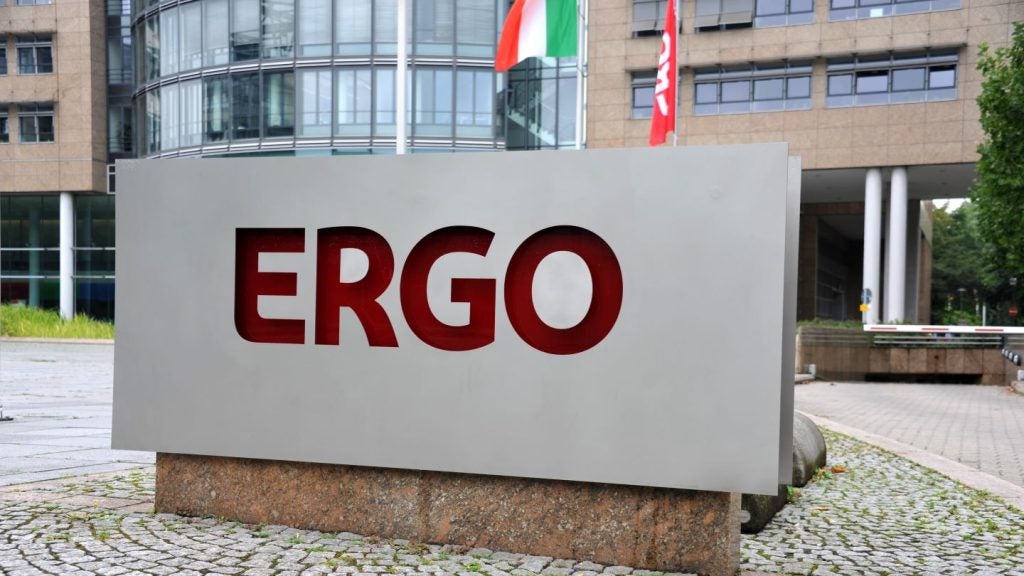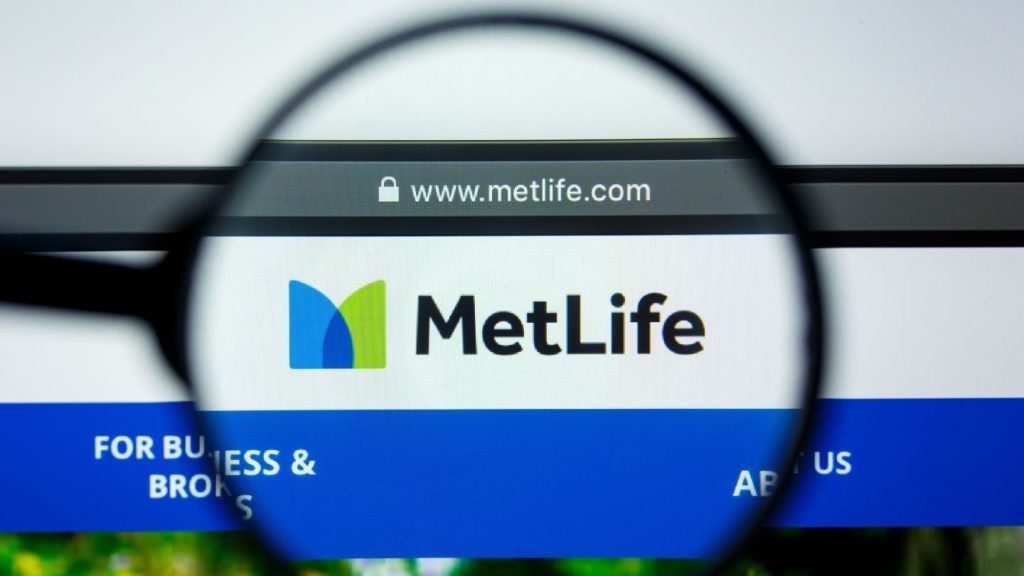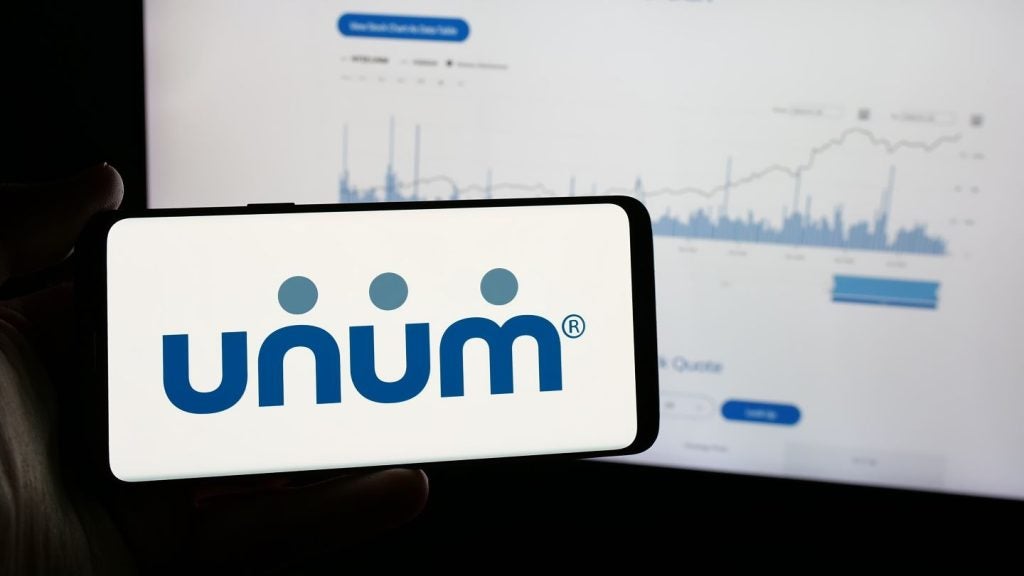AIG, the US life insurance industry is reeling under the combined
impact of slumping asset values and badly dented investor
confidence. Despite hope that the worst may be over, insurers face
risks ranging from variable annuity guarantees to rising corporate
bond defaults.
Life insurers appeared to have dodged the bullet in the greatest
cataclysm in modern financial services history – until now.
Weeks after the stocks of big Wall Street banking groups
imploded, life insurers began to wilt under scrutiny, with a wave
of warnings of dismal third-quarter reports suggesting that a
similar round of consolidation and recapitalisation may also be in
store for the life industry.
After a period of relative stability during July and August, the
prices of insurance shares began to dive in the first week of
September before reaching a low in early October. During this
period the Standard & Poor’s (S&P) Insurance Index fell 50
percent, from 270 to 134.4 – extending its total decline to 68
percent since peaking at 420 in May 2007.
The UK’s equivalent FTSE Insurance 350 Index declined by a very
similar 60 percent between May 2007 and October 2008, while the
broad-based US S&P 500 Index fell by 45 percent.
Adding to the sense of vulnerability, Hartford Financial
Services Group (Hartford), the US’ fifth largest life insurer,
raised $2.5 billion by selling shares to European insurer Allianz,
while MetLife, the largest US life insurer, raised $2 billion in a
public offer of shares and unveiled its own negative third-quarter
earnings report.

US Tariffs are shifting - will you react or anticipate?
Don’t let policy changes catch you off guard. Stay proactive with real-time data and expert analysis.
By GlobalDataMetLife was one of the first big insurers to raise capital in
this downturn, and it appears to be one of the least in need. Even
before it sold 75 million shares for $26.50 per share in October,
it had some $4 billion in excess of the level associated with a
strong capital base.
MetLife reported that its net income for the third quarter of
2008 was $639 million, a decline of 38 percent from $1.02 billion
posted during the third quarter of 2007. However, thanks to an
effective hedging strategy which generated a profit of $745 million
in the quarter, MetLife’s results were significantly better than
its peers. In a positive sign, the company said it would continue
to pay out its annual dividend.
MetLife’s share price also weathered the market slump
comparatively well. From a high attained in October 2007, the
insurer’s share fell by 54 percent before reaching a low in
mid-October 2008 – from which it has now recovered by about 10
percent.
Though modest by comparison with the S&P Insurance index
which has gained about 30 percent since reaching its low in late
October, MetLife’s recovery must be seen against what is still a
respectable price to earnings (PE) ratio of 24. This is almost five
times higher than the industry’s average PE ratio of only 5
reflected by the S&P Insurance Index.

Hartford takes a beating
Among the major insurers Hartford suffered one of the most
substantial setbacks, reporting a third-quarter 2008 net loss of
$2.63 billion, as against a net income of $851 million in the third
quarter of 2007.
“It is clear that an overweight position in financial services
and structured securities hurt us in the third quarter,” said
Chairman and CEO Ramani Ayer during a conference call. “Over 70
percent of our third-quarter impairments came from financials, and
we took real economic losses in some high-profile names like Fannie
Mae and Lehman.”
Hartford remains financially strong and has the liquidity and
capital to meet its commitments to customers, Ayer said.
During the market decline Hartford was among the most
spectacular losers, its share price plummeting by 92 percent
between May 2007 and late-October 2008 to an all-time low of $8.23.
Hartford’s share price has since rebounded, trebling to about $24
in early November.
Hartford’s slide was worsened by a comment by Senator Harry
Reid, the Senate majority leader, during the debate over the $700
billion Treasury bailout programme. Reid said in a television
interview that he had heard that a major insurer, “one with a name
that everyone knows,’’ was on the verge of going bankrupt. He later
said he mis-spoke, but the market assumed that he was referring to
Hartford, and the damage was done.
In addition to raising additional capital, Hartford has
announced that it will retrench 500 employees – 1.6 percent of its
total workforce – as part of a strategy to cut annual costs by $250
million by the end of 2009. This strategy does not affect
Hartford’s move from its existing 81,000 square foot (7,450 square
meters) head office to a new 129,456-square-foot building.
Hartford was also not alone among the major US life insurers to
report a loss in the third quarter.
Though not as severe as Hartford’s profit slump Prudential
Financial, the US’ second-largest life insurer, also took strain in
the third quarter, reporting a $166 million net loss compared with
a profit of $860 million in the third quarter of 2007. Severest
damage to Prudential’s third-quarter 2008 net profit was a $547
million net-realised investment loss.
Prudential Financial’s share price was one of the big losers
during the equity market slump, falling by 77 percent from its high
reached in May 2007 to a low in late-October 2008. Prudential’s
share price has subsequently recovered by about 50 percent.
Welcome as the recovery in share prices of listed US life
insurers may be, this does not herald the end of the industry’s
problems. Indeed all major ratings agencies – AM Best, Fitch,
Moody’s and S&P – have revised their outlook for the industry
from stable to negative.
A revision to a negative industry outlook generally implies that
over the next 12 to18 months, ratings agencies expect more
downgrades than upgrades across the life insurance companies they
rate.
The industry’s first revision to negative came from AM Best in
mid-September, which at that stage noted that it had downgraded
ratings of 18 life companies and upgraded only six in the first
nine months of 2008.
Negative outlook
In addition to the obvious risks presented by uncertainties
surrounding an economic slowdown, property values, interest rates
and equity markets, AM Best pointed to another risk factor: the
life industry’s shift from traditional protection products to asset
accumulation products. This, stressed the agency, “brings higher
exposure to guarantees and greater policyholder optionality.”
Higher-risk products referred to by AM Best relate to
equity-linked products with guarantees such as variable annuities
(VA), equity-indexed annuities, variable life and variable
universal life.
In essence, the guarantee features that attracted investors to
VAs in particular and made them one of the life industry’s key
profit drivers are driving up insurers’ costs and generating
lowering fee income as the equity market drops.
In its assessment of the US life industry’s outlook Fitch paid
considerable attention to risks posed by VAs. The agency warned of
“a dramatic impact” on US life insurers active in the VA market and
that their ability to manage growing risk exposure represented “one
of the most significant risk management challenges confronting US
life insurers.”
Indicative of the scale of the risk presented by VAs, net sales
of the product totalled $16 billion in the first half of 2008 while
total net assets were $1.405 trillion at the end of the second
quarter, according to industry body the National Association of
Variable Annuities. This represented a 177 percent increase
compared with total assets of $796 billion at the end of 2002, an
increase driven in part by market appreciation and the attraction
of new VA products offering what Fitch termed “increasingly
aggressive” guarantee features.
These include guaranteed living benefits, guaranteed minimum
withdrawal benefits and guaranteed minimum death benefits. It is
guaranteed features such as these that are giving rise to
concern.
“Equity market performance in 2008 constitutes a significant
stress scenario for variable annuity writers in the US,” said
Douglas Meyer, a MD in Fitch’s US Insurance group. “We are
concerned that insurers are overly optimistic about the
effectiveness of their hedging programmes, which are designed to
mitigate the losses associated with a downturn in the equity
market.”
The negative impact of a hedging programme gone wrong was no
better illustrated than in the case of UK-domiciled insurer Old
Mutual’s experience with its US unit, Old Mutual US Life (OMUS) in
the second quarter of 2008.
In 2007 OMUS expanded its sales of an offshore VA product, with
much of the new premium invested in Asian-focused mutual funds and
sold predominantly to Asian customers. A feature of the product was
a minimum return guarantee with a hedging programme covering the
guarantees run out of Old Mutual Bermuda unit.
However, far from fully hedging the guarantees Old Mutual’s
former CEO Jim Sutcliffe announced in August 2008 that on average
they had provided only about 60 percent protection against market
falls.
The cost to Old Mutual at that point was £112 million ($180
million) in the form of an insurance guarantee reserve and a
further £150 million capital injection into OMUS.
Even this proved inadequate. In September, Old Mutual announced
that it had recognised additional guarantee reserves of $155
million and had set aside a further $250 million to support the
capital needs of its Bermuda unit.
Certainly OMUS was not the only insurer to feel financial pain
from VA. Fitch estimates that this year’s decline in equity markets
increased capital and reserves required to support the VA business
in the US by up to $15 billion in the period January to
mid-October.
For Fitch another concern is lack of extensive long term data on
VA policyholder behaviour in their use of guarantees. In effect
many of the guarantees are now akin to an in the money put option
in that the guarantee is worth more than the net asset value of the
VA.
Of particular concern is that the US economic situation is now
such that many VA policyholders may be tempted into utilising
features such as guaranteed income benefits and guaranteed
withdrawal benefits. Fitch has termed policyholder behaviour to be
the “wild card” in an analysis of insurers exposed to the VA
market.
Underscoring this view S&P noted in a study published at the
end of 2007: “Unpredictability of policyholder behaviour, despite
the best actuarial assumptions, could be the greatest potential
risk.”
Risk in the VA market is particularly concentrated. Based on
sales in the first six months of 2008 the top 10 VA writers had a
combined market share of 70.7 percent of sales and the top 20
writers a combined 93.2 percent share, according to industry body
LIMRA International.
Concentration of VA sales among the top 10 carriers compares
with the top 10 insurers’ combined 43.9 percent share of the life
industry’s total gross written premium income of $782 billion in
2007.
Based on the life and health insurance industry’s total gross
written premium income of $782 billion in 2007 the top 10 carriers
had a combined market share of just under 44 percent, based on data
published by industry body the Insurance Information Institute
(III).
At the end of 2007 there were 1,190 life and health insurers in
the US, though many formed part of larger groups. According to the
American Council of Life Insurers there are effectively just over
350 life and health insurers.
Other risks abound
The unquantifiable risk presented by VAs and other guaranteed
products is not the only risk faced by the US life industry.
The economy itself holds bleak prospects with the industry’s
customer base likely to come under increasing financial strain in
the months ahead. The US economy probably entered recession in the
second quarter of this year, Robert Hartwig, president of the III
said in a presentation delivered on 20 October at the Southeastern
Regulators Association Conference.
He noted that year-on-year GDP growth in that quarter came in at
2.8 percent and is anticipated to decline to -0.3 percent in the
third quarter and -1.1 percent in the fourth quarter of this
year.
A slow recovery is anticipated in the first quarter of 2009,
with GDP growth forecast at -0.1 percent and rising to 1.2 percent,
2.1 percent and 2.5 percent in the subsequent quarters for
full-year growth of 0.5 percent in 2009. GDP growth, which peaked
at 3.6 percent in 2004, stood at 2.9 percent, 2.8 percent and 2
percent in 2005, 2006 and 2007 respectively.
The inevitable result of the sharp economic slowdown is a
decline in employment. According to Hartwig the US economy shed
760,000 jobs between January and February this year with the
highest number, 159,000, shed in September. The unemployment rate
in September reached 6.1 percent, the highest level since September
2003.
This trend is anticipated to continue with Hartwig noting that
the unemployment rate is expected to peak at about 9 percent in the
last two quarters of 2009. Even those who remain employed are
feeling the strain of falling real incomes. According to Hartwig,
average weekly private sector earnings in 1982 constant dollars are
now down 1.8 percent compared with 2007.
Already falling casualty to a harsh economy are contributions to
savings plans. According to a survey conducted by the American
Association of Retired Persons, between 3 September and 21
September 2008 20 percent of workers aged 45 and over have stopped
putting money into a 401(k), individual retirement account or other
retirement accounts.
Also falling casualty to the weak economy are company profits
with the accompanying danger of default on corporate bonds,
particularly on below-investment grade high yield corporate
bonds.
A major portion of life insurers’ investment portfolios,
investment in bonds of all types totalled $2.2 trillion at the end
of 2007 according to the III.
Of this total Fitch informed LII that it estimated that
investments in below-investment grade corporate bonds totalled
about $128 billion. This, said Fitch, represented 5.8 percent of
all bond holdings and 40 percent of total adjusted statutory
capital.
Put in another perspective, the total exposure of the life
insurance industry to high-yield corporate bonds is not far short
of the value of its equity holdings. According to the III, these
totalled $142.5 billion at the end of 2007 – of which $76.8 billion
was in ordinary shares and $65.7 billion in preferred shares.
One of Fitch’s primary concerns expressed in its analysis of the
high yield corporate bond market relates to the impact of shrinking
consumer disposable income on profits of companies in the sectors
sensitive to consumer spending, which it warns will be hard
hit.
This is, however, not Fitch’s only major concern. The other
relates to far more stringent lending criteria being imposed by
banks. Notably, in a survey conducted by the Federal Reserve Board
in July 2008, some 60 percent of respondent banks said they were
tightening lending standards on commercial and industrial
loans.
At present, explained Fitch, proceeds from bonds and loans that
have been issued recently are providing support to companies. But
this represents only a short-term support that will disappear
during the coming months as companies experience cash-flow problems
resulting from a weak economy.
Even companies able to borrow in debt markets will do so at a
high cost that will further erode cash flows.
In addition, Fitch warned that for speculative grade companies
challenging credit conditions are expected to last for years beyond
the current crisis.
There has already been a dramatic increase in high-yield
corporate bond defaults this year. According to Fitch, by the end
of September based on the par (face) value high-yield bonds
defaults had totalled $25 billion compared with defaults totalling
only $3.5 million during 2007 as a whole.
If the bonds related to the spectacular failings of investment
bank Lehman Brothers and banking group Washington Mutual are
included, the par value of corporate bond defaults this year stands
at over $100 billion – a level similar to defaults in 2002.
However, the high default rate already evident this year may be
just be the start. Fitch believes what it terms “the coming high
yield default wave” may be the most severe on record and extend
over “the next several years.”
The most severe period of defaults in the high-yield corporate
bond market over the past three decades spanned 2001 and 2002.
According to Fitch, in 2001 173 issuers defaulted on bonds with
a total par value of $78.2 billion and in 2002 165 issuers
defaulted on bonds with a par value of $109.8 billion.
This represented default rates of 12.9 percent and 16.4 percent,
respectively.
The road ahead
How another blow in the form of ballooning high-yield corporate
bond defaults and continued equity market volatility will impact
insurers remains to be seen. However, the good news is the
government’s decision to extend assistance to the life insurance
industry under its Troubled Asset Relief Program (TARP).
On Hartford’s conference call after its earnings were released,
CFO Lizabeth Zlatkus indicated that the company might consider
taking advantage of government funding, depending on terms.
“As we stand here today, we feel very well capitalised,” Zlatkus
said, but added that the insurer would examine the terms of any
government lifeline that is offered.
“We certainly think there are favourable terms and we would look
to do that,” she added. Hartford certainly is not alone in
contemplating taking up the government’s extension of the TARP
lifeline.







